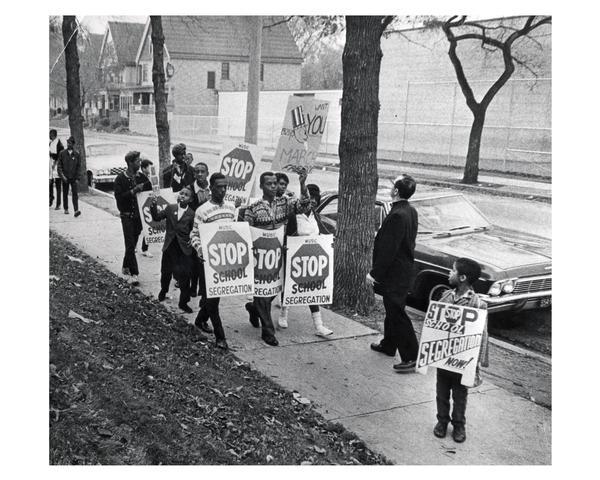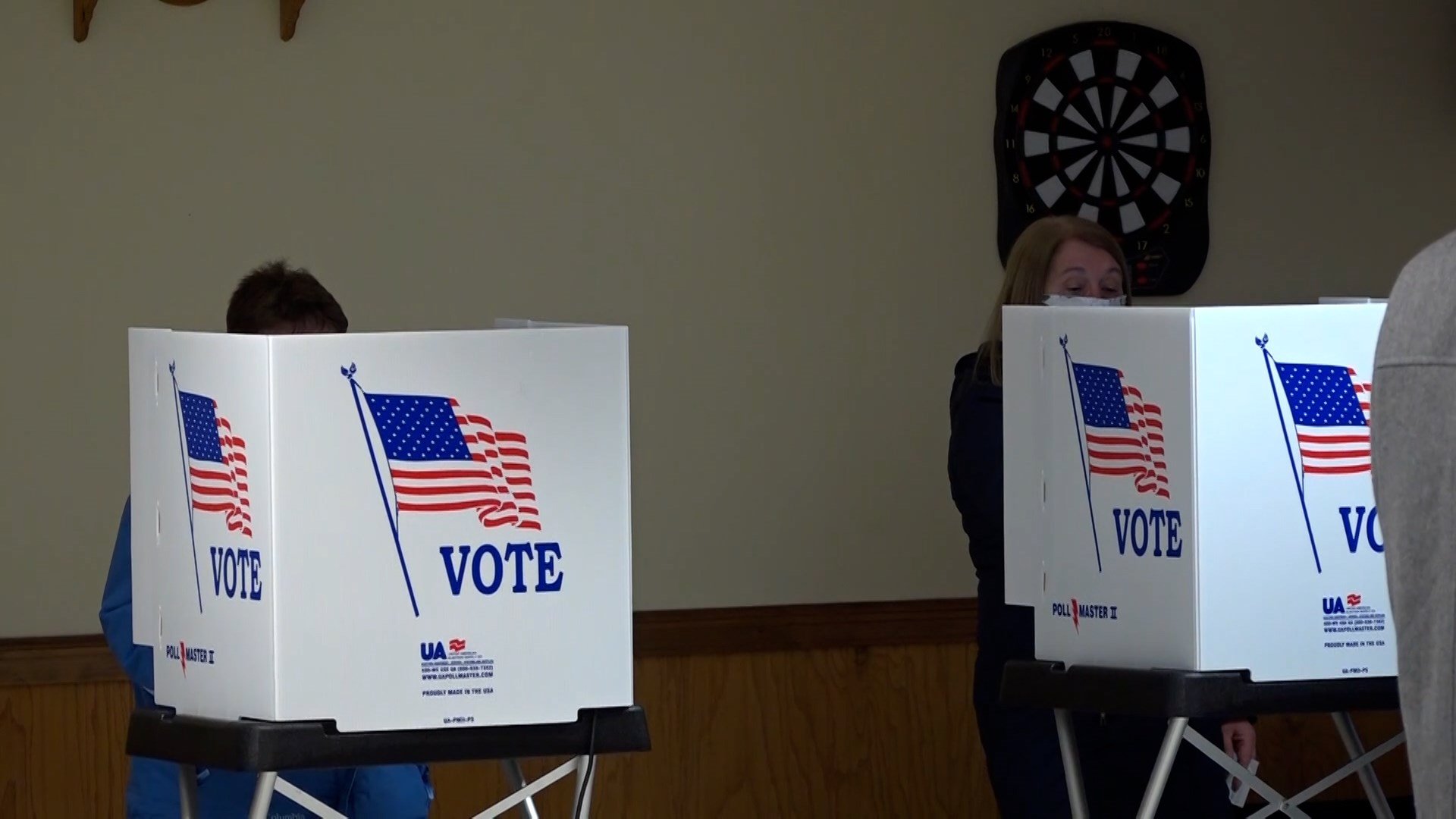The Justice Department And The End Of School Desegregation

Table of Contents
The Early Years: Aggressive Enforcement of School Desegregation (1954-1970s)
Following the landmark Brown v. Board of Education Supreme Court decision in 1954, which declared state laws establishing separate public schools for black and white students to be unconstitutional, the Justice Department initially played a vigorous role in enforcing school desegregation. Under Presidents Eisenhower, Kennedy, Johnson, and even Nixon, the DOJ actively pursued desegregation through various legal avenues.
- Use of court orders and injunctions to desegregate schools: The DOJ utilized the power of federal courts to issue orders mandating the desegregation of school districts across the nation. These injunctions forced resistant school boards to develop and implement desegregation plans.
- Investigations into patterns of segregation and resistance: The department conducted thorough investigations into school districts suspected of maintaining segregation, uncovering patterns of resistance and uncovering discriminatory practices.
- Filing lawsuits against recalcitrant school districts: The DOJ actively filed lawsuits against school districts that refused to comply with desegregation orders, leading to numerous court battles that pushed for integration. Cases like Green v. County School Board of New Kent County (1968) demonstrated the DOJ's commitment to dismantling dual school systems.
- Examples of successful desegregation cases supported by the DOJ: While many cases resulted in prolonged legal battles, the DOJ's intervention secured landmark victories in numerous states, gradually leading to the integration of many previously all-white or all-black schools.
- Highlighting the successes and limitations of busing as a tool: Busing, a controversial method used to achieve racial balance in schools, was championed by the DOJ in some instances. However, it also faced significant resistance and proved to be a complex and imperfect solution, often leading to white flight and exacerbating existing tensions.
The Shifting Sands: A Change in DOJ Priorities and Legal Strategies (1980s-Present)
The Reagan administration marked a significant turning point. The DOJ's approach to school desegregation shifted dramatically, moving away from aggressive enforcement and towards a more lenient stance.
- The impact of changing political climates and judicial interpretations on desegregation efforts: The conservative shift in American politics during the 1980s influenced the DOJ's priorities. Changes in judicial interpretations of desegregation remedies also played a significant role.
- The rise of "school choice" initiatives and their effect on desegregation: The emergence of school choice initiatives, often framed as promoting competition and parental autonomy, arguably diverted attention and resources away from proactive desegregation efforts. Some argue that these initiatives exacerbated existing segregation by allowing for the creation of more racially homogenous schools.
- Focus on "remedial measures" rather than systemic change: The DOJ's focus shifted from addressing systemic racism in education to addressing only specific instances of proven discrimination, limiting the scope of interventions.
- Examples of cases where the DOJ's stance on desegregation weakened: Under the Reagan and subsequent administrations, the DOJ became less active in pursuing desegregation cases, leading to a decline in legal challenges against discriminatory practices.
- Decreased funding and resources allocated to desegregation enforcement: Reduced funding and a lack of resources further hampered the DOJ's ability to effectively enforce desegregation orders.
The Role of Supreme Court Decisions in Shaping DOJ Policy
Key Supreme Court rulings significantly influenced the DOJ's approach. Milliken v. Bradley (1974), for example, limited the scope of desegregation remedies, restricting the ability of federal courts to mandate inter-district busing. These decisions constrained the DOJ's legal strategies and impacted the pace of desegregation.
- Explain how these rulings limited the scope of desegregation remedies: Cases like Milliken effectively tied the hands of the DOJ in addressing de facto segregation, which resulted from housing patterns and other non-legal factors.
- Discuss the impact of these rulings on the DOJ's legal strategy: These rulings forced the DOJ to adopt a more limited approach, focusing on individual schools and districts rather than addressing broader systemic issues.
- Analyze the consequences of these decisions on the progress of desegregation: The limitations imposed by these Supreme Court decisions contributed significantly to the slowing and eventual stalling of desegregation efforts in many parts of the country.
The Present State of School Segregation: A Legacy of the DOJ's Evolving Role
The current state of school segregation in the US is a direct result of the DOJ's evolving role. While legally mandated segregation has ended, de facto segregation persists.
- Discuss the persistence of de facto segregation and its underlying causes: Residential segregation, unequal resource allocation, and other socioeconomic factors continue to contribute to highly segregated schools.
- Analyze the role of socioeconomic factors in perpetuating school segregation: Poverty, access to quality housing, and other socioeconomic factors significantly influence school demographics, perpetuating a cycle of segregation.
- Explore the ongoing debate surrounding school choice and its impact on racial integration: The impact of school choice on racial integration remains a topic of intense debate, with some arguing it exacerbates segregation while others maintain it can promote diversity.
- Mention current DOJ initiatives, if any, related to school equity: While the DOJ's focus may have shifted, there are ongoing efforts at the federal level to promote educational equity and address disparities in school systems.
Conclusion
The Justice Department played a pivotal role, both positive and negative, in the history of school desegregation. Early aggressive enforcement yielded significant progress, but later shifts in policy and legal interpretations significantly hampered efforts towards true integration. The legacy of these decisions continues to shape the landscape of American education today. Understanding the role of the Justice Department in shaping the history of school desegregation is crucial to addressing ongoing inequalities in education. Further research into the complexities of school desegregation and the DOJ's involvement is essential to finding effective solutions for achieving equitable educational opportunities for all students. Learn more about the ongoing fight for school desegregation and how you can contribute to positive change.

Featured Posts
-
 Remembering Ted Kotcheff Director Of Rambo First Blood 1982
May 02, 2025
Remembering Ted Kotcheff Director Of Rambo First Blood 1982
May 02, 2025 -
 Robust Poll Data System Ensuring Election Integrity
May 02, 2025
Robust Poll Data System Ensuring Election Integrity
May 02, 2025 -
 Daisy May Cooper Faces 30 000 Lawsuit Over House Paint Colour
May 02, 2025
Daisy May Cooper Faces 30 000 Lawsuit Over House Paint Colour
May 02, 2025 -
 Check The Lotto Wednesday Results April 16 2025
May 02, 2025
Check The Lotto Wednesday Results April 16 2025
May 02, 2025 -
 The Urgent Need For More Psychiatrists In Ghana A National Mental Health Crisis
May 02, 2025
The Urgent Need For More Psychiatrists In Ghana A National Mental Health Crisis
May 02, 2025
